What Are the Parts of a Revolver? Grip to Muzzle Explained
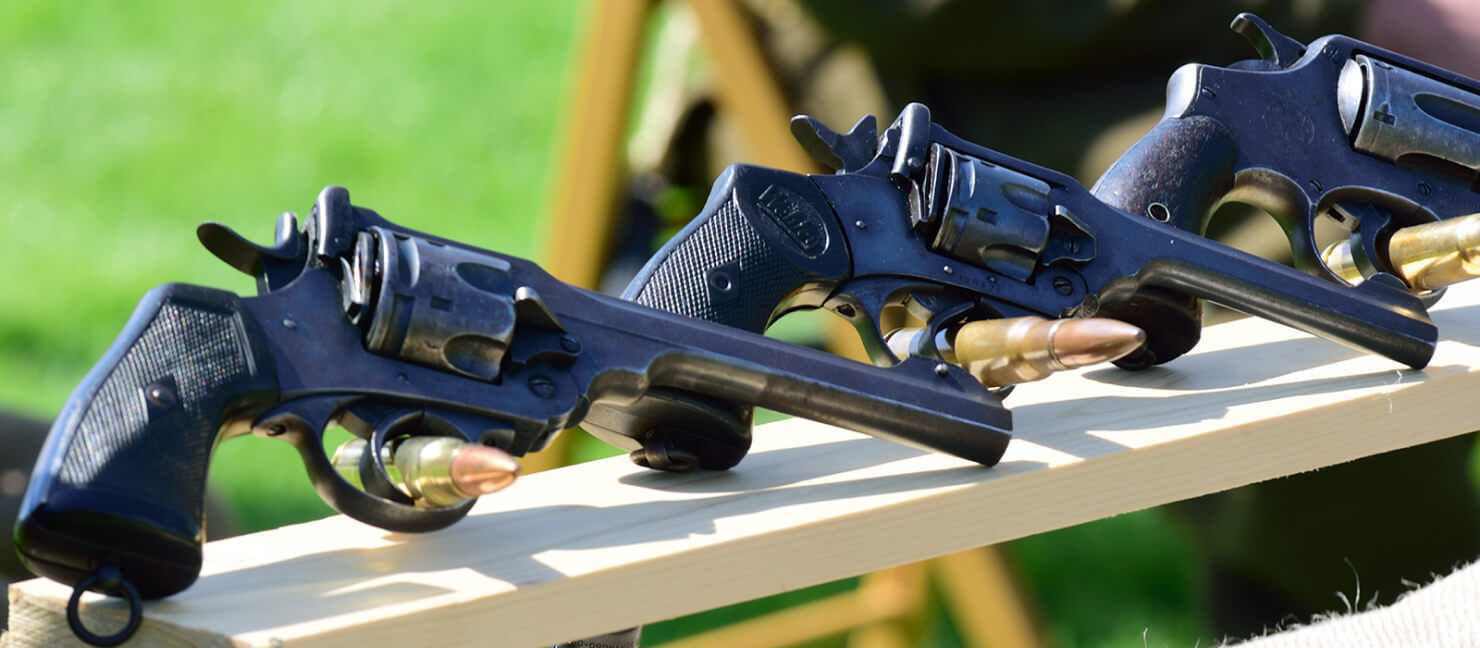
Looking to pick up a revolver for your collection? Knowing all the parts of a revolver can help you as you strip this classic firearm down for cleaning and maintain its overall performance. Keep reading to learn all about the major components and more!
Key Takeaways
- Main Parts of a Revolver: The main parts of a revolver include the frame, trigger, hammer, barrel, cylinder, chambers, and muzzle. These parts assist in firing the gun as well as loading and unloading ammo.
- Frame and Grip: The frame is the main part of the handgun, the grip is where you hold the gun when firing, and the trigger guard prevents you from accidentally hitting the trigger.
- Barrel and Sights: The bullet goes through the barrel and ejects at the muzzle. The sights help you to line up your shot while the top strap runs along the top of the cylinder to reinforce the revolver.
- Cylinder and Loading Mechanism: The cylinder is where the ammo is stored. The crane is attached to the cylinder’s frame. Each cylinder has 5-10 chambers. The ejector rod ejects spent shells while the extractor star pushes out the individual cartridges.
- Action Mechanism: To fire a shot, the hammer will ignite the primer after it’s manually cocked. The shooter pulls the trigger to fire a shot. To reload, the shooter must press down on the cylinder release.
Main Parts of a Revolver
You may already know some key parts of a revolver: the trigger, barrel, and cylinder. But could you identify the other components (like the cylinder release, hammer, and trigger guard)? There’s a lot more to these small, simple, and easy-to-conceal firearms. No matter if you’re stuck between industry favorite brands like Smith & Wesson, Taurus, and Colt, you’ll want to keep your revolver in top shape and condition! So before you clean your revolver, let’s dive into the four main sections of a revolver: the frame & grip, barrel & sights, cylinder & loading mechanism, and action mechanism
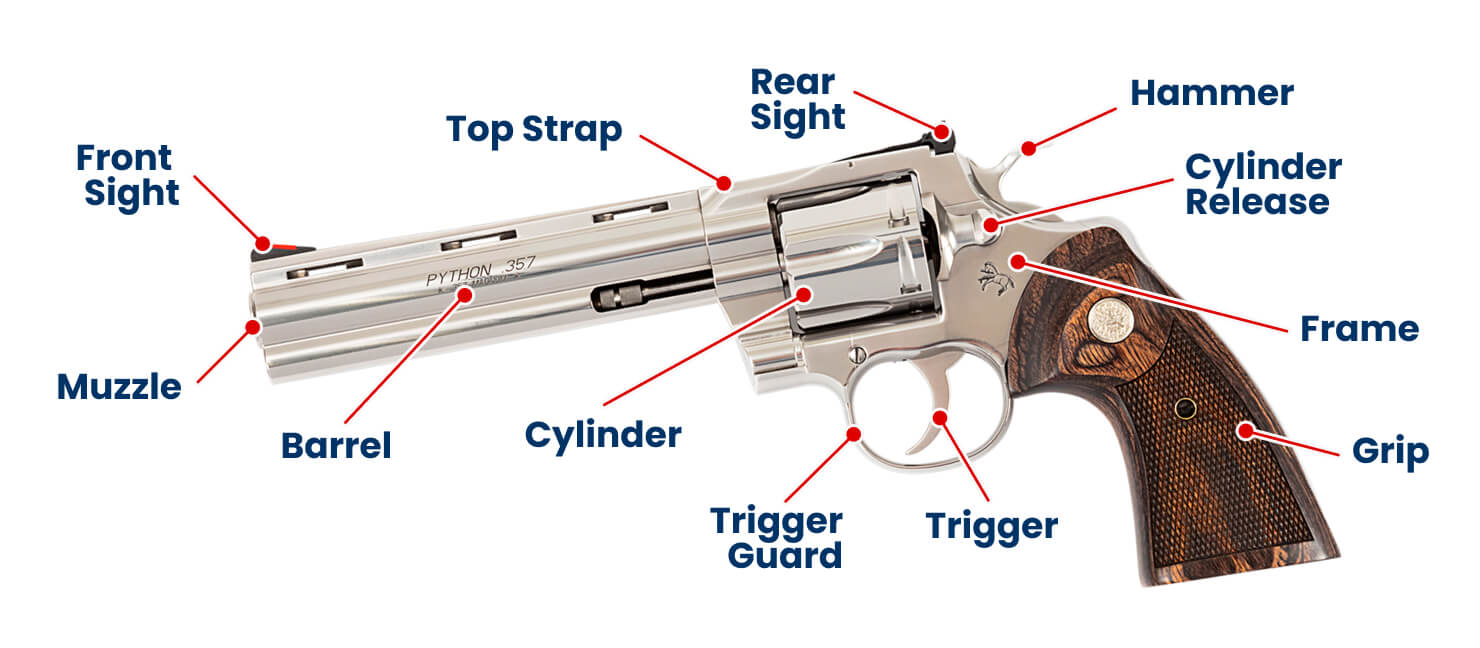
Frame and Grip
Frame
Grip
Trigger Guard
Barrel and Sights
Barrel
Muzzle
Sights
Top Strap
Cylinder and Loading Mechanism
Cylinder
Chamber
Crane/Yoke
Ejector Rod
Extractor Star
Loading Gate
Action Mechanism
Hammer
Trigger
Cylinder Release
Frame and Grip
The revolver's frame, which includes the trigger guard and grip, stands out in comparison to other firearms. Smaller, unloaded revolvers can weigh less than a pound. You can explore various frame options to discover the one that provides the most comfortable feel and grip for your needs. Learn more about the frame and grip.
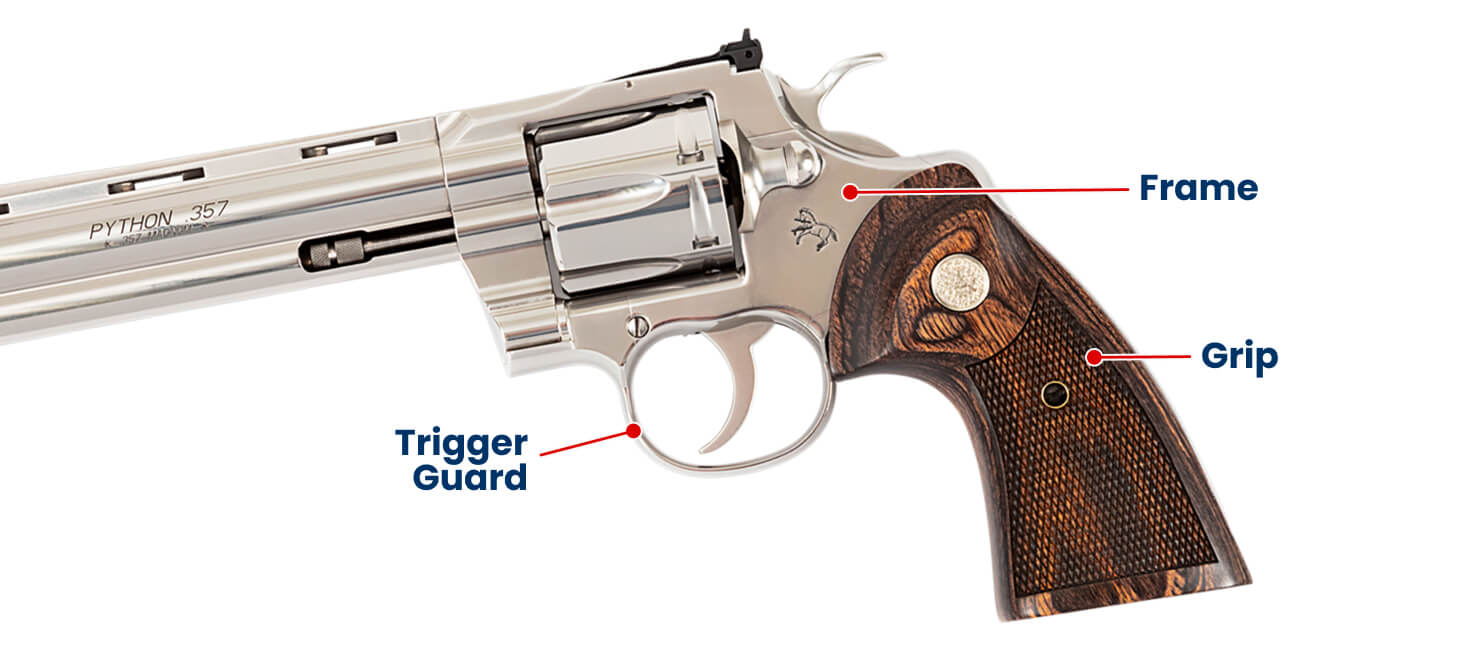
Frame
The frame is the largest component of the revolver. It connects all the other pieces. To shoot comfortably, you may need a smaller or larger frame. For example, Smith and Wesson offer different-sized frames — I, K, M, N, J, L, X, and Z — so you can pick the one that suits your needs.
Grip
The shooter holds the grip when firing their gun. Some revolvers feature a textured grip for easier handling. Grips can be wooden or made of hard rubber material. Revolvers have a grip panel that conceals the internal parts.
Trigger Guard
The trigger guard is a loop that surrounds the trigger. It prevents the shooter from accidentally firing the trigger before they are ready. You need to train yourself to keep your finger off the trigger and away from the trigger guard until you’re ready to shoot.
Barrel and Sights
When you shoot a revolver, the barrel, muzzle, and sights all come into play. The barrel and muzzle serve as the exit path for the projectile. The sights assist in precise aiming. See how these parts function together to help you increase accuracy when shooting.
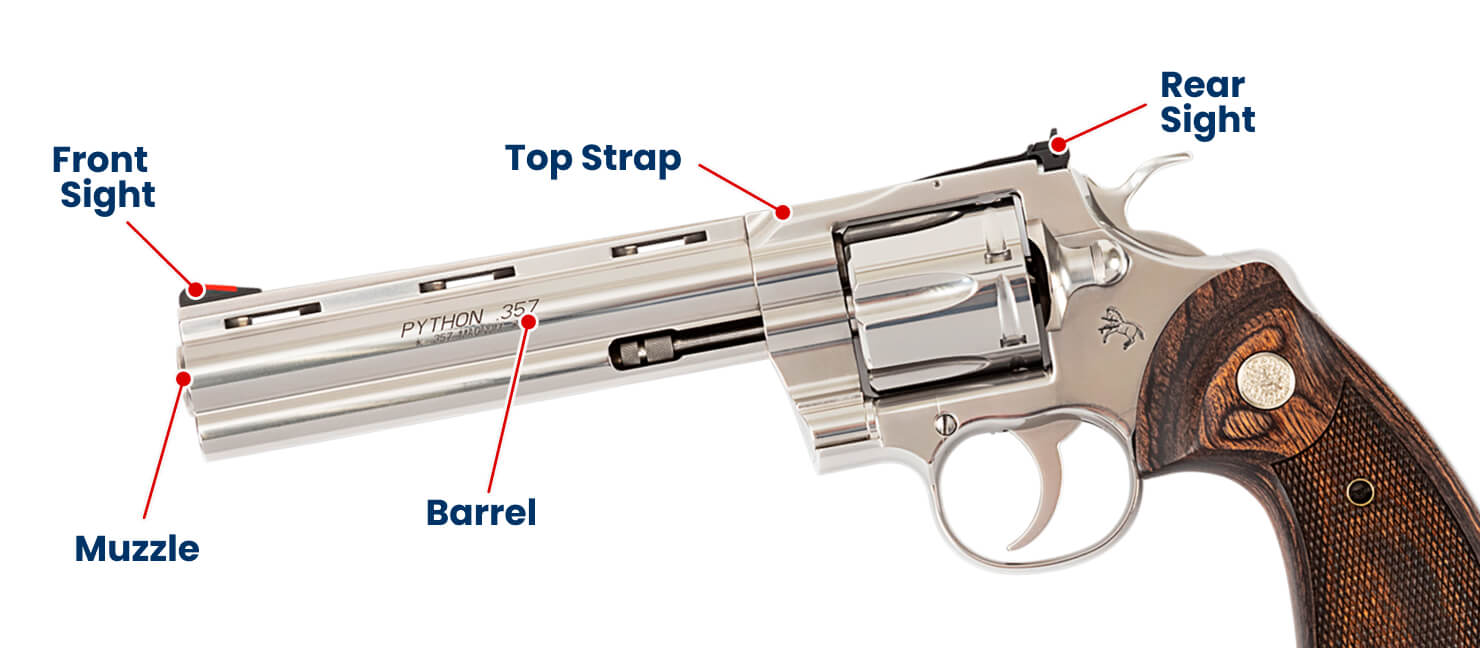
Barrel
The barrel is a metal tube that the bullet is guided through after a shot is fired. It is a structural part of the frame. They can range from 3 in. to 12 in. in length.
Muzzle
The muzzle is the very tip of the barrel. This is where the bullet leaves the gun. You can find certain muzzle-loading revolvers that require you to load the bullet into the handgun’s muzzle.
Sights
Most revolvers feature a rear sight and a front sight along the top of the gun. The rear sight is located above the trigger, and the front sight is located near the muzzle. They help you to direct the bullet when taking a shot.
Top Strap
The top strap runs along the top of the cylinder. It helps to reinforce the revolver so it’s stronger. The top strap is made out of metal. Some early revolvers may lack a top strap.
Cylinder and Loading Mechanism
Shooters love the simplicity of the cylinder and its loading mechanism. It’s fairly straightforward and easy to use. Revolvers have a manual loading and unloading mechanism that involves parts like the ejector rod and extractor star. Keep reading to learn more.
Cylinder
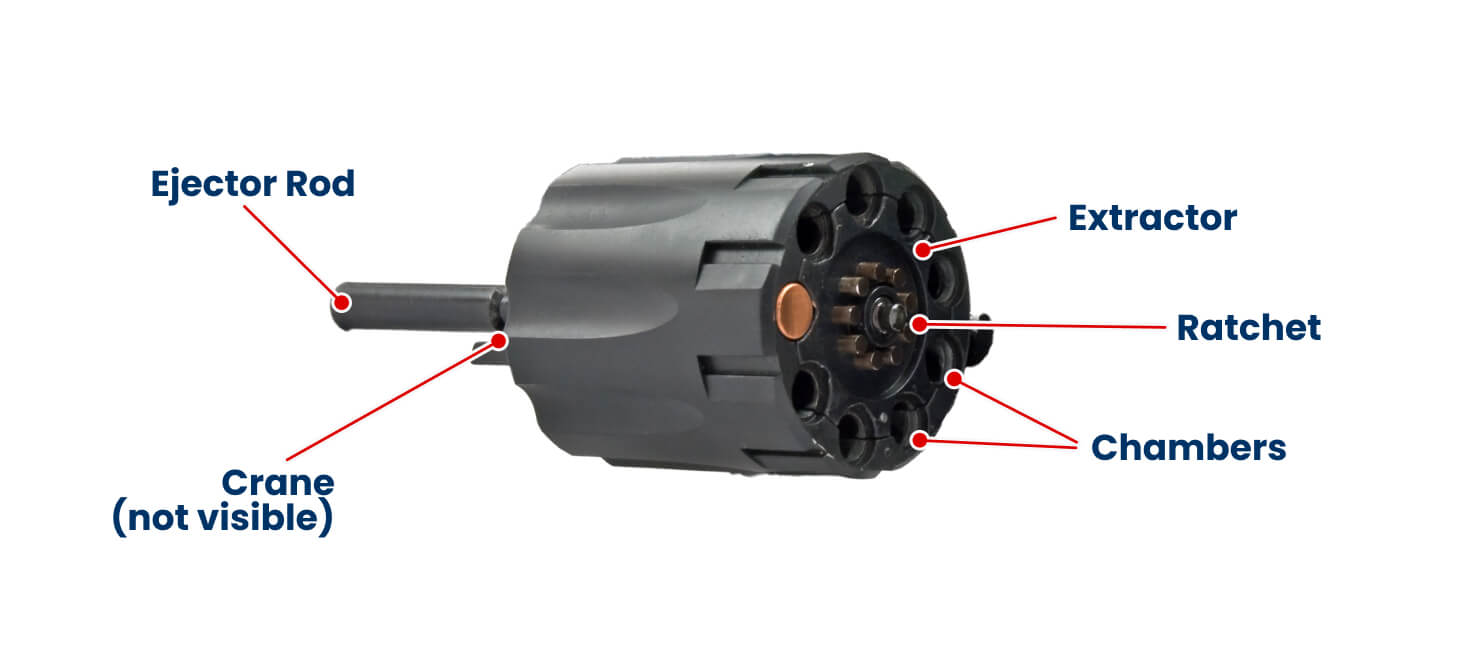
The cylinder typically rotates out and opens to the left side of the frame. From there, shooters can insert ammo into the chambers. Most cylinders feature 5-10 chambers, depending on the model.
Crane/Yoke
The crane/yoke allows the cylinder to swing out from the frame. This piece supports the cylinder and acts as an arm of the cylinder. Certain brands will refer to this piece as either the crane or the yoke.
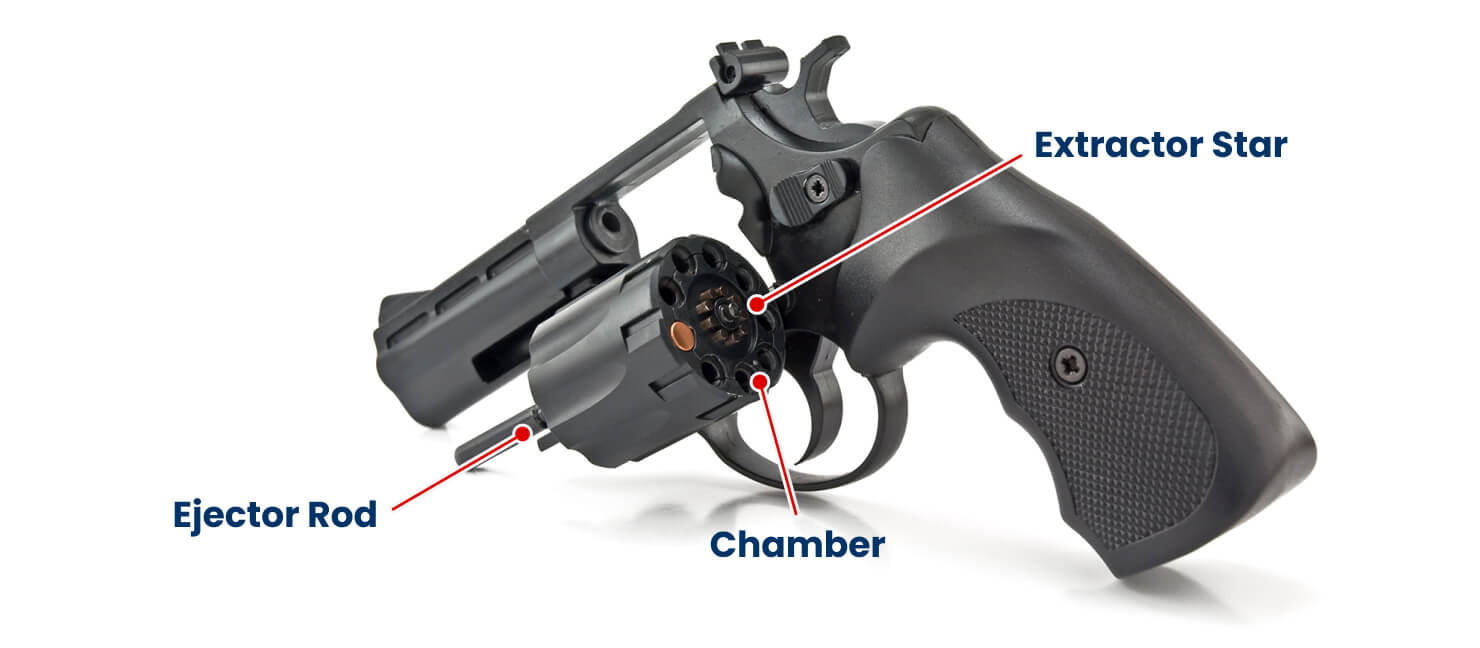
Chamber
The chambers are empty openings located inside the cylinder. This is where the individual bullets will be inserted. One chamber can hold one round. It must be aligned with the barrel when shooting.
Ejector Rod
The ejector rod is a small rod that shooters press to eject the spent shells. This needs to be done manually. Double-action revolvers are more efficient than single-action and can eject all of the spent shells at once.
Extractor Star
The extractor star is a star-shaped piece that helps push the cartridges out of the cylinder. The cartridges catch on its star-shaped design once the ejector rod is pressed. You can think of it like a hook that catches on the cartridges.
Loading Gate
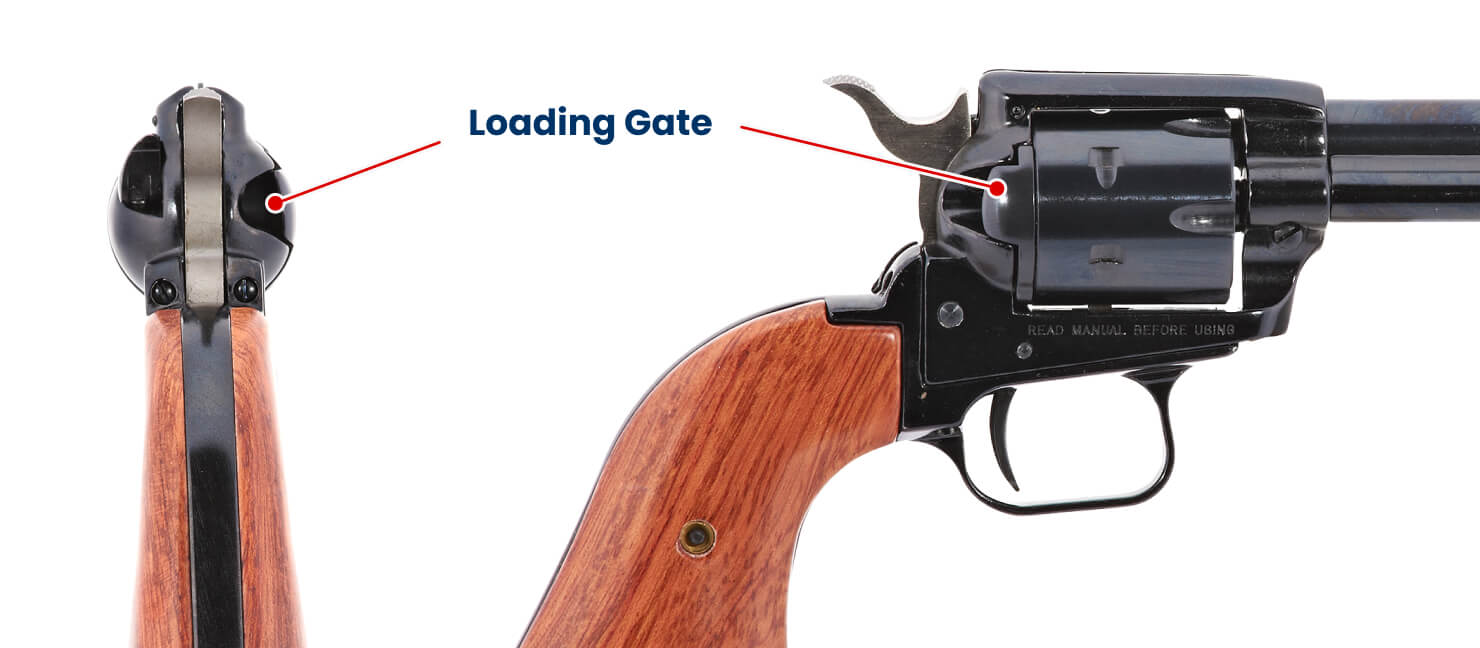
In revolvers with fixed cylinders, shooters need to load rounds through the loading gate. The loading gate is found at the back of the cylinder and can be opened so the shooter can insert or eject a round.
Action Mechanism
The first step in the firing sequence is when the shooter pulls the trigger. A spring generates force into the hammer. From there, the hammer strikes the firing pin. The firing pin activates the primer, and the propellant pushes the bullet down the barrel. Learn more about the action mechanism below.
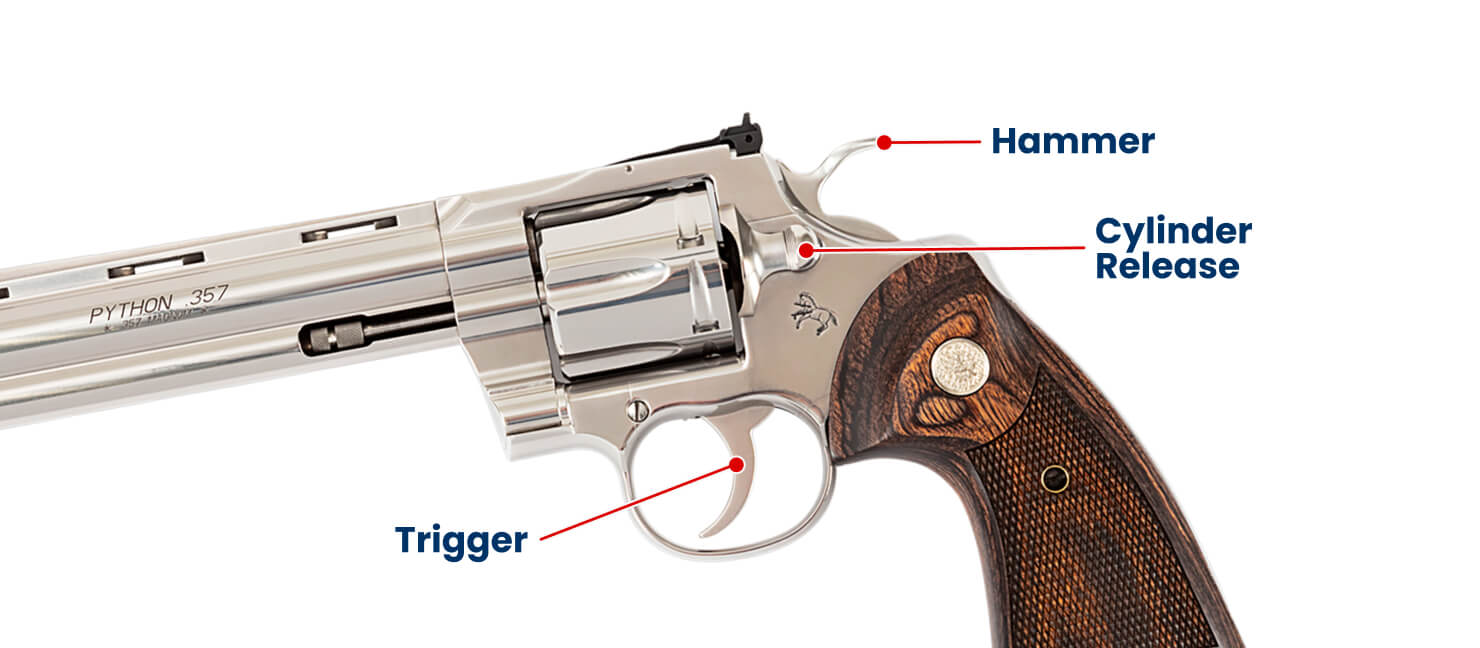
Hammer
The hammer is located behind the cylinder. It serves the purpose of igniting the primer at the base of the ammunition. If the surface of your hammer is flat, it may have a floating firing pin. In single-action revolvers, you must manually cock the hammer.
Trigger
The trigger is the mechanism that fires the revolver. Never place your finger on the trigger until you’re ready to shoot. In the case of a double-action trigger, it can both cock the hammer and fire the revolver.
Cylinder Release
Find the cylinder release (a small lever) on the left side of a revolver. To load and unload the revolver, use the cylinder release. Shooters can do this by either pushing it forward or pushing it down.
 Gift Cards
Gift Cards Hot Deals
Hot Deals Big Fun Deals
Big Fun Deals Clearance
Clearance

